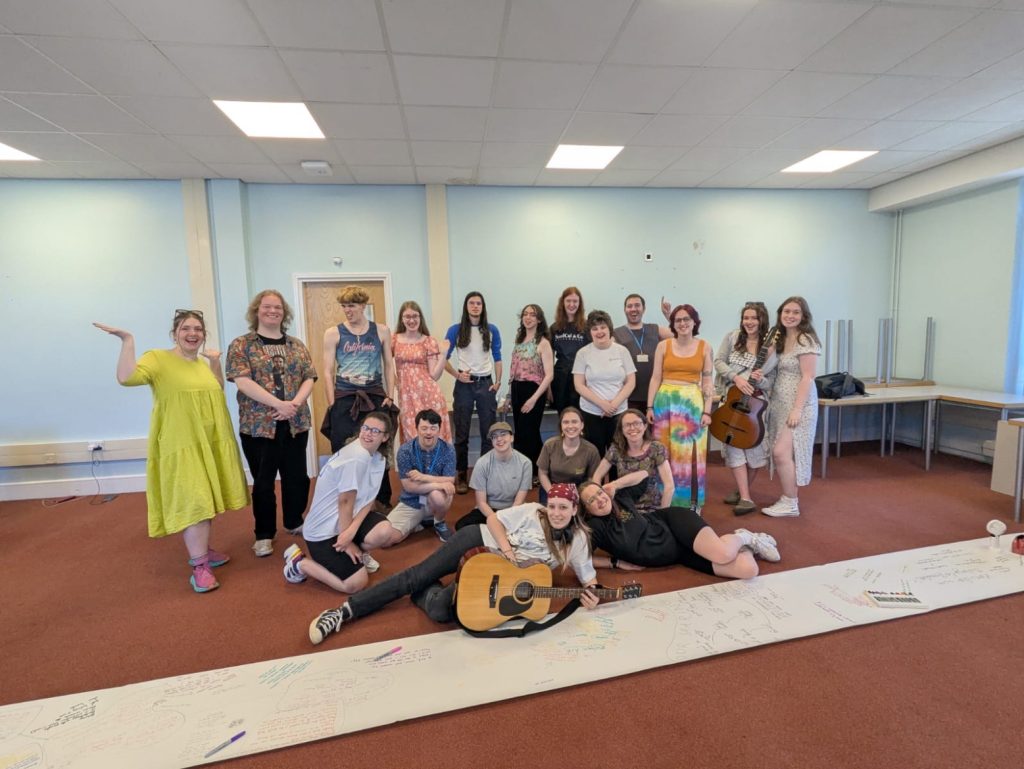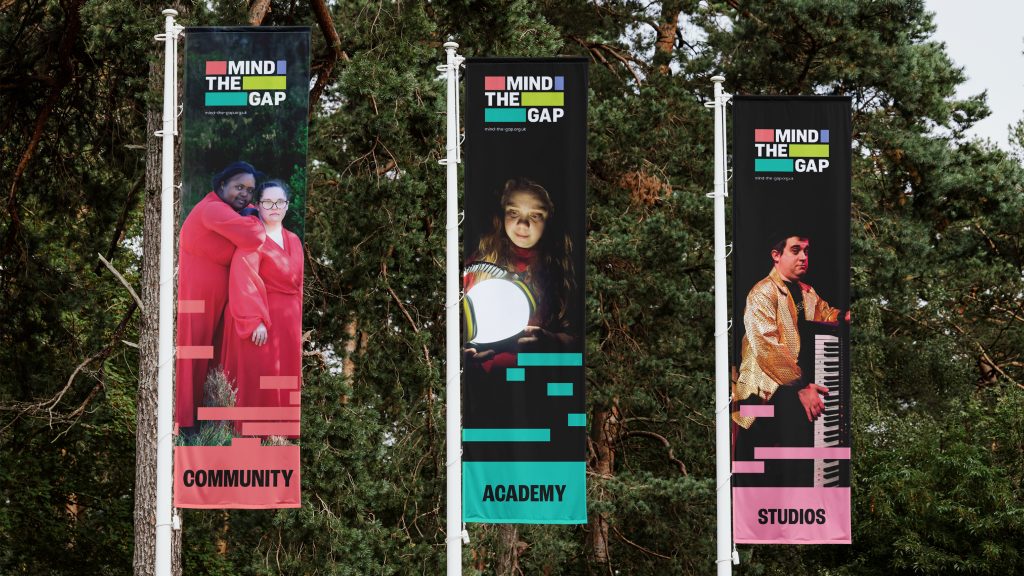York St John University Drama and Acting students, and Mind The Gap Performance Academy students, have collaborated on a creative exploration of themes of belonging and place, culminating in a performance lecture in a YSJ studio theatre.
Bradford-based Mind The Gap (MTG) is one of the UK’s best-known theatre companies for artists and students with a learning disability and/or autism, committed to breaking down the barriers they might face to opportunities and careers in the arts. Since 2021, in collaboration with YSJ’s Institute for Social Justice, the company has offered an innovative Level 4 Certificate in Higher Education. Performance Academy students spend three years studying classic and contemporary theatre, dance techniques, music production, and music composition.
“Our new cohort of Performance Academy students will graduate in York Minster in 2027, in the same ceremony as YSJ’s current first year Drama and Acting students,” says course tutor Becca Johnson. “So it seemed an ideal moment for them to collaborate with each other as fellow students.”
The theme of belonging arose from the City of Culture 2025 festival in which Bradford is celebrating its own multiple cultures and ever-evolving sense of place, but is also highly resonant with YSJ students.
Course tutor Cath Heinemeyer said, “First year students have usually just started to carve out new geographies and identities in a new city. Those who chose the Theatre for Social Change option wanted to explore how MTG students might experience belonging and non-belonging in both different ways and similar ways to themselves.”
The learning from this short collaboration, which both MTG and the Theatre for Social Change course hope to deepen in future years, was substantial.
Getting to know you
In an exploration of belonging in a world that remains very far from inclusive, it was vital to build up trust and dialogue between the two groups of students. They gradually got to know each other by online means before meeting in person, by sharing introduction videos, and responses to creative prompts from the Creative Doodle Book (developed by the ISJ’s Matthew Reason and MTG during the Covid pandemic).
When the two groups then shared two days of workshop practice – the plans for which they had negotiated via email correspondence between them – they could look out for familiar faces with known interests. One verse of the song they eventually co-wrote came out of just such an emerging friendship between a MTG and a YSJ student.
MTG student Issy Ridding said, “There wasn’t a ‘who are these people, we don’t know who they are’, we didn’t get worked up.” YSJ student Henry Hall agreed that this early phase of relationship-building was vital: “This was useful as it allowed me to view them not as strangers, but distant friends, where we have built this common ground, based on likes and memories.”
My space or yours?
Since the first of the two collaborative day workshops was held at MTG Studios in Bradford, the second at York St John, each group took the role of hosts to the other, as well as the more challenging role of being hosted in the environment and working practices of the other. YSJ student Bethan Phillips noted with interest that this was reciprocal: “It showed me the importance of being comfortable and feeling safe in your working environment.”
A third, fictional space was perhaps even more important than either of these two spaces. Together the two groups decided to create an island to which they could all belong, developed its mythology, history, values and culture, and wrote its national anthem. For Henry, the invented island of Benula offered many metaphors for thinking about how the two groups developed a collaborative relationship – for example the island had two tribes inhabiting two different climate zones, but they were interdependent and shared important festivals and histories. Issy said, “I liked making statues of the heroes of the land, we could show our creative sides and be less ourselves and focus on the characters we created, it gave me inspiration for the stories I could create in the future.”
Nothing exists in a bubble
An important moment of insight came from a MTG student, Abi Sheridan, when we explored the obstacles to belonging in a place. Abi pointed out that while collaborative art projects attempt to create a safe “bubble” of inclusion, “nothing exists in a bubble” as the systemic issues that prevent inclusion are always present in some form. This was a reminder that people with a learning disabled and/or autism cannot rely on a new space they are entering being accessible. MTG students reflected that they had had anxieties with unfamiliar space, and how the YSJ students would respond to their working practices.
How to overcome such obstacles became a key point of reflection for both groups. Henry felt that more investment in the early relationship-building phase would be valuable in future work: “I imagine further communication off both sides, and more frequent communication, would build a stronger bond for the first in person meeting.” MTG student Bethan Jones suggested that “it might be nice to share stories together to create more of a personal connection.” Her fellow student Robbie Lenton felt that sharing memories and stories between the two groups did much to prevent any sense of judgement prior to meeting.
Abi’s insight also provided the refrain of our island’s national anthem, summing up our aspirations throughout the project:
Nothing exists in a bubble
But we’d like this to be a bubble
Becca Johnson

